The router we’ve used for years was suitable for many tasks, but it was too large and heavy to use on the many small pieces that went into the Penobscot 14 we built. We did some research and were intrigued by the compact routers designed for trim work, so we picked one up and gave it a try. We were very pleased with the range of projects it could do.
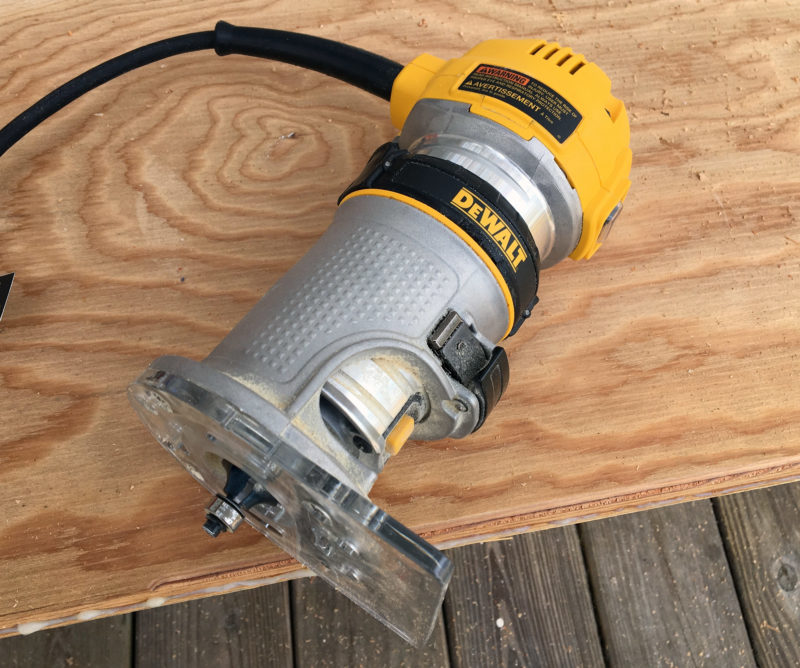 Kent Lewis
Kent LewisDeWalt’s DWP611 weighs 4.6 pounds and has a 1-1/4 hp motor.
The tool we chose, the DeWalt DWP611 Compact Trim Router, has a 7-amp, 1-1/4 hp motor with variable speed of 16,000 to 27,000 rpm. The clear plastic base and two built-in LED lights make it easy to see the bit and the edge of the piece being worked. The 4″-wide base provides a stable platform, and 1/4″-shank bits are easy to change with multiple spindle-lock detents and a single wrench. The motor has a soft-start feature and an automatic electronic control to keep bit speed constant. The router has a depth adjustment with a range of 1-1/2″ and a clamping mechanism to lock the vertical position with a quick flick of a lever. The 8’ power cord is long enough to move around our work area. There are standard 1-3/8” template guide inserts and a vacuum-hose attachment available for use with the router.
We have used the compact router on cypress, white oak, mahogany, white pine, yellow pine, and Peruvian teak. It powered through some white pine with a Roman ogee bit with no problem, and eased the edges of the cypress, pine, and teak with round-over bits of different sizes. The variable speed is handy to get the best performance on different materials, the lower speeds especially, to minimize the chance of router burn on hardwoods. The router’s contoured grip is set low and is easy to handle on the smaller pieces, and I do not have to fight the torque that the larger router puts out. With the high horsepower and amp rating, the router runs cool. The aluminum base is textured to provide a secure grip while keeping fingers clear of the bit. Many jobs were simplified by being able to hold the router with one hand and steady the workpiece with the other.
One of our first thoughts when we bought this compact router was to set it up with a dedicated round-over bit and leave it that way, but we quickly found that it can handle a variety of bits on a variety of large and small projects. For one of those projects we set up a scarfing jig and put an 8:1 scarf on several sheets of 6mm plywood, with complete control of the router during the precise cut. We find that the DeWalt DWP611 is a very useful tool for our shop.![]()
Kent and Audrey Lewis paddle, row, and sail a small armada of boats in the skinny waters of Northwest Florida. Their messing-about reports can be found at their small-boat restoration blog.
The DWP611 Compact Trim Router from DeWalt is available from home-improvement and hardware stores and from online retailers. Prices vary, starting at $124.
Editor’s Notes
Soon after Kent sent me the draft of his review of the DeWalt router, I went shopping for a compact router for myself. I’ve had a small Makita router, the now extinct 3608B, for 30 years and it has worked well, but even as small as it is, it is often awkward to handle. Kent convinced me of the advantages of a compact trim router, and I wasted no time shopping for one. I settled on the Ridgid R2401, which is in many ways like Kent’s DeWalt DWP611 with a soft-start motor and very precise depth adjustment. The one-handed operation, the clear base, and the built-in lights would have been enough of a step up from my Makita, but there are several other features I appreciate. The soft-start feature on both the Ridgid and DeWalt routers won’t test your grip. The Ridgid router has a flat, rubber-guarded top so it will sit upside down for changing bits without marring delicate finishes. The on/off switch is on the top of the router, so it will turn itself off when set upside down. It’s a pull-push switch, so a quick slap will also turn the router off—you don’t have to go hunting for it. The Ridgid R2401 is a good value for the $99 price tag.
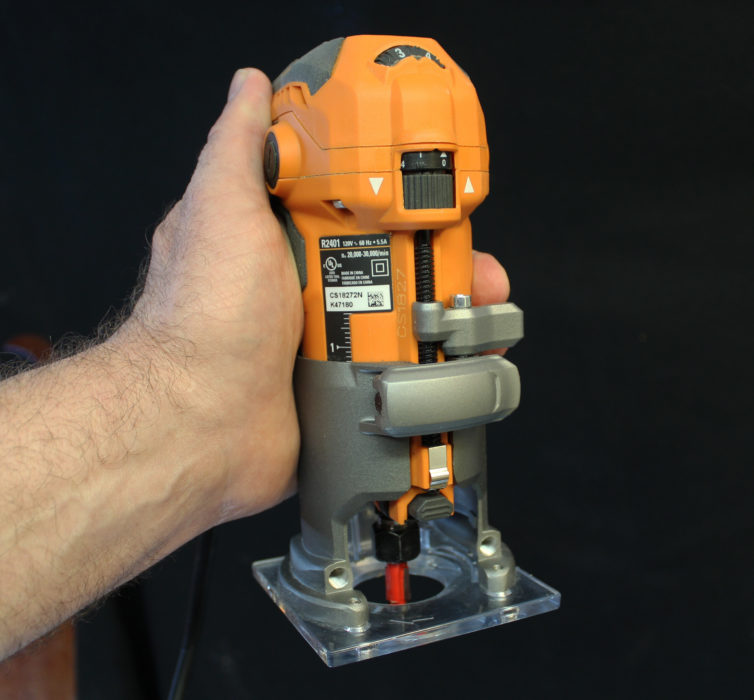 Christopher Cunningham
Christopher CunninghamThe Ridgid R2401 weighs 3.8 lbs and has a 1-1/2 hp motor.
Is there a product that might be useful for boatbuilding, cruising, or shore-side camping that you’d like us to review? Please email your suggestions.




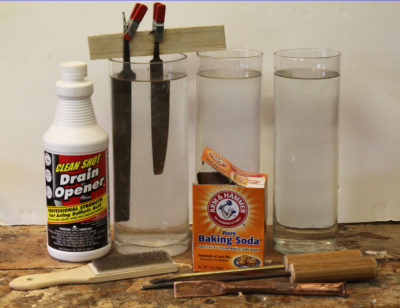
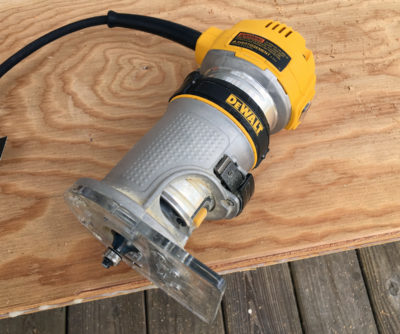
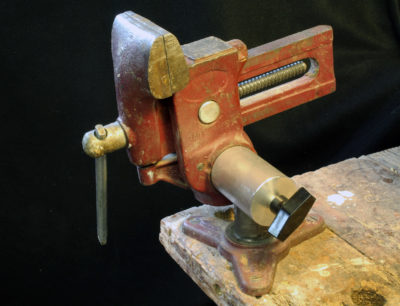




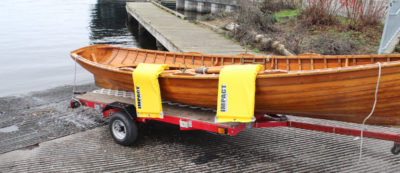
Many of the discoveries that the author has made are the same ones made by countless other boatbuilders over the years. In my tool-poor early years I struggled with a single standard-size router, knowing that it was too heavy and bulky to fit into many of the tight spaces on boats. Close to thirty years ago I decided to give a laminate trimmer a try. Since then, I’ve never looked back. The larger router is good (maybe better) for doing long runs at the bench, but for shaping small parts, or parts attached to the boat, the little guy is the ticket. I’m glad that I have my standard router, but if I had to choose one or the other, I think I would have to go with the laminate trimmer. Mine is a different brand from the one described in this article, but I’m sure I could be happy with the one in this piece.
The Dewalt comes with a plunge base as well, as does the Porter Cable. I bought Grizzly’s version, which I have become very fond of. Also has 7 amp motor (if memory serves), and has the plunge base. I have 2 gripes about it, however: 1) it has a plastic rather than rubber cord, which is much stiffer/less flexible, and 2) it does not take the standard PC template bushings, nor is there an accessory base available. I make do with homemade bases when I need to use a pattern bit.
A pox on all tools with plastic cords. Why has there been no uprising to protest this outrage?
A couple of years ago I replaced my clunky old Bosch trimmer with a Ridgid like the above. Love it: easy to load bits, easy to adjust, soft start, built in light, adjustable speed, all in all a big upgrade in convenience and performance. I also made an offset base for it, sorta teardrop shaped with a little handle at the narrow end: makes those edge trimming operations more secure. Right now I’m using the trimmer to put threads on a set of legs for an Axel Thygesen roll-up table.
We have a couple of laminate trimmers at work, Makitas and a Bosch, all are good tools. They are really great for inletting work.